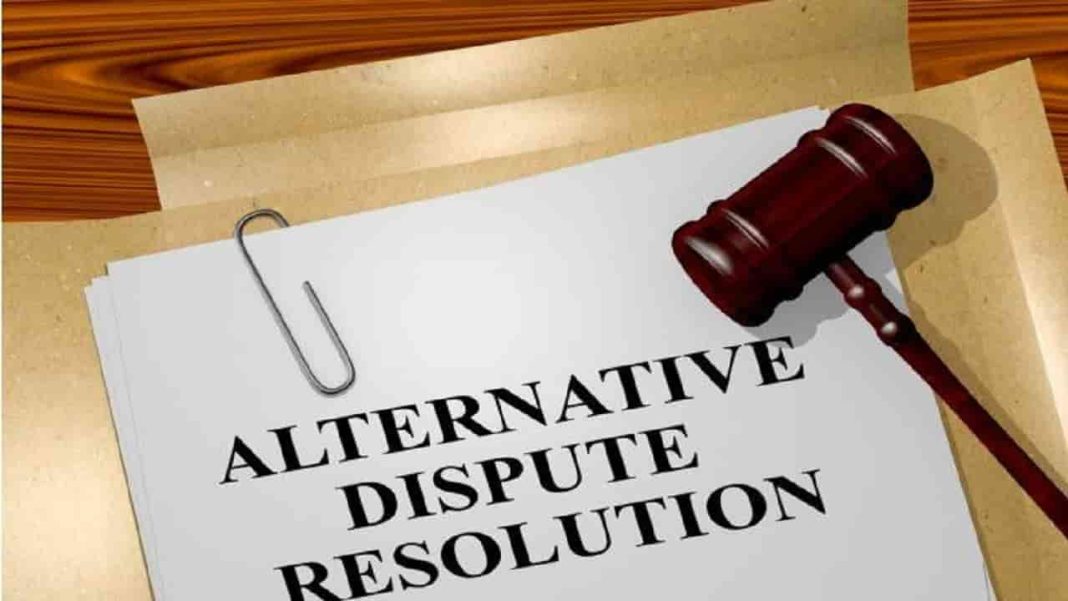By Sujit Bhar
Once in a while, societal differences seep through cracks in civility as dispute. It is up to the civilised world to try and patch up these cracks, apply the healing balm and bring the situation back from chaos to order. It is up to civil society to maintain the status quo and not let natural order be disrupted.
To achieve this, from times immemorial, the services of wise people had been commissioned. In early societies, the big bully, often the leader of the pack, passed summary judgments, as per his wish. With the development of society, more people joined the decision making process, expectedly in odd numbers, and in one such process, in India, the panchayat system came into being. This happened way before modern politics and the judicial system had been invented.
India saw its first somewhat universal written legal system through the Ain-i-Akbari, a detailed 16th-century document on the administration of Mughal Emperor Akbar. The British codified even more detailed legal practices, on the lines of what they had devised for their own country.
However, whether it is the panchayat system of ancient India, or prescriptions laid out in Ain-i-Akbari, or in English laws adapted for India, mediation has always been present as a precursor to formal courts.
This should have put India leagues ahead of the rest of the world, as far as dispute resolution is concerned. It was eminently showcased in the epics, Ramayana and the Mahabharata, where each and every action, even if it was of the king or the head priest, was dissected in open court with arguments and counter-arguments.
Considering this long history of traditional dispute resolution systems, it is surprising that India’s Alternative Dispute Resolution (ADR) mechanism seems to still lack any formal authority, and it is also surprising that international ADR orders today aren’t given their due in India.
This was evident when the Future Group went to court against the Singapore International Arbitration Centre’s (SIAC) order that favoured Amazon and scotched Reliance’s takeover bid of Future Group assets in a sideways sale.
The Supreme Court of India had to finally order the maintaining of sanctity for proceedings at the SIAC, saying that it will not allow stalling of the arbitral proceedings pending before the SIAC. Chief Justice of India DY Chandrachud, who headed the bench, made it clear that there was “rule of law” prevailing in the country.
Be that as it may, the final decision of the SIAC always remained open to challenge in an Indian court.
To understand the effect of such actions, one needs to go back a bit.
India’s ADR mechanism has been suffering from post-natal pangs and growth pains for a long time now. While arbitration in India is as old as the very concept of Bharatvarsh as a nation is, if one goes back just a little, to the Arbitration Act of 1940 and its replacement by the Arbitration and Conciliation Act, 1996, one finds that the act of arbitration has barely stepped out of its teens in this country.
In 1982, settlement of disputes out of courts started through Lok Adalats. The first Lok Adalat was held on March 14, 1982, at Junagarh in Gujarat, and now it has been extended throughout the country. Initially, Lok Adalats functioned as a voluntary and conciliatory agency without any statutory backing for its decisions. By the enactment of the Legal Services Authorities Act, 1987, which came into force from November 9, 1995, the institution of Lok Adalats received statutory status. This was followed by the new Arbitration and Conciliation Act, 1996.
Lok Adalats are doing good work in disposing of cases quickly, but many of them then move to the courts, into the same cycle of delays and pendency. That does not help. Also an ADR should have a better understanding of how settlements can be achieved in international deals or contracts.
Recently, India and Bangladesh signed a deal, by which a 130-km pipeline connecting the two countries—Siliguri in West Bengal, India, and Parbatipur in Dinajpur district of Bangladesh—will carry refined fuel from Numaligarh of Assam in India to the Parbatipur depot in Bangladesh.
The six-km Indian leg of the pipeline project will be implemented by Assam-based Numaligarh Refinery Limited, and the 124-km Bangladeshi leg will be implemented by Bangladesh Petroleum Corporation.
While this is a great development, replacing the existing practice of sending diesel by rail, covering a distance of 510 km, disputes will arise within this long term deal on various issues. This being an essential service, any mediation will have to be quick. The mechanism will, obviously, be through ADRs. In India, this mechanism has yet to be institutionalised; ditto for Bangladesh. Any movement through the courts of any country will jeopardise the essential and urgent nature of the service.
Such international deals will, in the long run, necessitate the ADR system in India to move into an institutional system and its verdict needs to be honoured.
This is also needed if the aim of making India an international arbitration hub has to be successful. A great deal of arbitration does take place in India today, but every serious arbitration issue goes to established centres, such as Singapore. Each party in a dispute has to keep faith in the arbitration process. Only through trial and error and with a conscious decision to avoid going to the already overburdened—also slow and more expensive—courts will India be able to present to the world a mature and highly respected arbitration system.
For India to do a full circle of history, the country has to learn to have faith in its extra-judicial redressal systems. That is the only way out.


